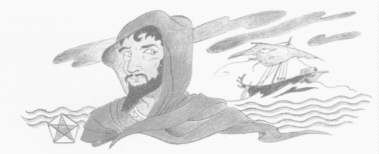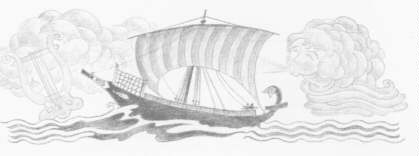

Before the Secret Brotherhood was disbanded, its members really thought they had grasped the key to the cosmos.
Then everything collapsed. Their whole scheme was destroyed by a fatal discovery, and the Order itself was destroyed by traitors and mob violence. Yet as we retell the somber tale, we will find that it was not a complete tragedy after all, for the Pythagoreans did enjoy their cosmic key briefly. This key was not found in abstract shapes alone nor in music, nor in the stars, but in one factor that-they believed-linked all of these: number.
"Himself" had said it: "Everything is number!"
So they followed Pythagoras teaching that the universe was ruled by whole numbers That did not mean numbers for ordinary counting or calculating. What interested them was the nature of a number itself odd even, divisible, indivisible and the relations between numbers. This was their arithmetike. And they applied it to their other three fields, and found startling number patterns in each.
In music, for instance, a sensational discovery about the relations of whole numbers and musical intervals was attributed to Pythagoras himself.
Another version said that he was strolling through the village of Croton, deep in thought, listening to the musical sounds of hammers striking anvils in a blacksmith's shop; when suddenly, tripping on a taut string that some children had stretched across the street, he got the inspiration for an experiment.
But the most popular story told that the idea came to him straight from the stringed lyre of his "father" Apollo, who was also the god of music.
Anyway, Pythagoras experimented with stretched strings of different lengths placed under the same tension. Soon he found the relation between the length of the vibrating string and the pitch of the note. He discovered that the octave, fifth, and fourth of a note could be produced by one string under tension, simply by "stopping" the string at different places: at one-half its length for the octave, two-thirds its length for the fifth and three-fourths its length for the fourth!
Other musical innovations were credited to him, such as a one-string apparatus for the study of harmonics. But his great discovery was the tetrachord, where the most important harmonic intervals were obtained by ratios of the whole numbers:
1, 2, 3, 4. The Secret Brotherhood gave this fourfold chord mystical significance and used to say: "What is the oracle at Delphi? The tetrachord! For it is the scale of the sirens."
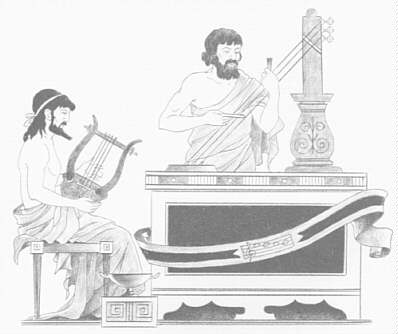
But it was in the connection of number and geometry, their two completely mathematical subjects, that the Pythagoreans were on surest ground.
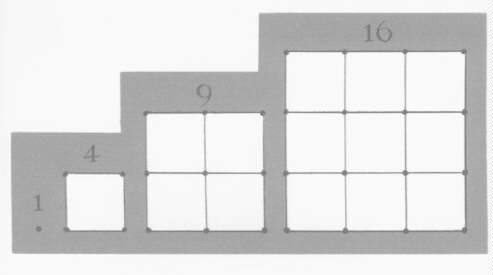
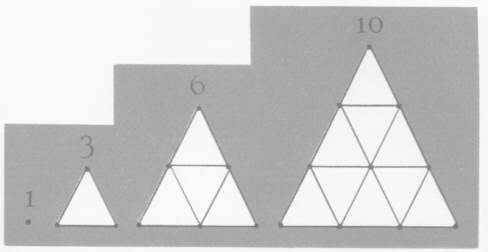
Presiding was Hippasus of Metapontum, whose name was to loom dark in their future of the Brotherhood. The idea was simply to find the numbers that matched the sides of the two right triangles with which Pythagoras had first demonstrated his theorem-the Egyptian triangle and the one from the tiled floor.
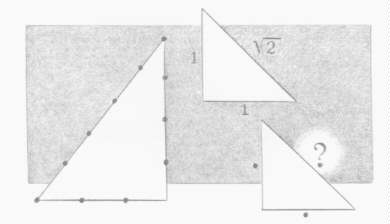
and 12 = 1 (square on other side)
and 1 + 1 = 2,
so 2 is the square on the hypotenuse. And the hypotenuse is the square root of 2.
But what was the square root of 2?
It couldn't be a whole number, since there is no whole number between 1 and 2.
120
Then was it a ratio of whole numbers between 1 and 2? Hopefully, they tried every possible ratio, multiplying it by itself, to see if the answer would be 2. There was no such ratio.
After long and fruitless work, the Pythagoreans had to give up. They simply could not find any number for the square root of 2. We write the answer as 1.4141..., a continuing decimal fraction, but they couldn't do that since they had no concept of zero and of decimals. They could draw the hypotenuse easily, but they could not express its length as a number. It was "unutterable"-"unspeakable"!
Horrified, the Pythagoreans called the square root of 2 an irrational number. After that, they found other irrationals and swore to keep them secret, for the discovery of these "irrationals" wrecked their entire beautifully constructed system of a universe guided by whole numbers. The breakdown in their mystical morale was followed by the breakup of the Secret Brotherhood itself.
In this final demolition, Hippasus played a decisive role, though his own fate is shrouded in mystery. The Order was already in trouble. Bitter resentment had grown up against its secrecy and exclusiveness, and riots of villagers had driven it out of Croton. Pythagoras himself had died on a neighboring island. And now mobs of "democrats" began to attack the aristocratic Pythagorean societies everywhere.
Against this background, Hippasus took a step that was regarded by the conservative members as sheer betrayal. He broke the oath of secrecy and revealed their most closely guarded discoveries-the dodecahedron and the irrationals. When they promptly expelled him, he set himself up as a public teacher of geometry.
The traitor's punishment was swift and terrible. He was very
The remaining secret groups soon collapsed, torn by outer violence and inner dissensions. And more and more "mathematicians" followed Hippasus' example and came out to earn a living as teachers. Pythagoras' idea had been demolished: no longer was there a closed Brotherhood of followers, bound together by a mystical belief in a cosmos ruled by number. Yet his ideals lived on in this broader field. He had pursued knowledge for its own sake, loving wisdom for itself. He knew learning could be shared without diminishing, that it lasts through life and immortalizes the learned after death. And the destruction of the Order gave his legacy to the world.
Geometry was now out in the open-and it was the new Pythagorean geometry. True, mathematics was still mixed with some magic: number mysticism, cosmic ideas about the regular solids. Burt there was, in addition, the famous theorem and its applications, the careful study of shapes, the theory of numbers, and the discovery of irrationals.
